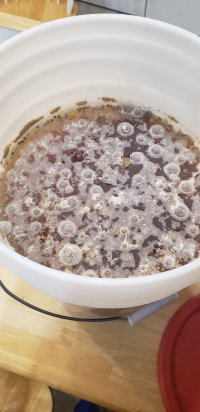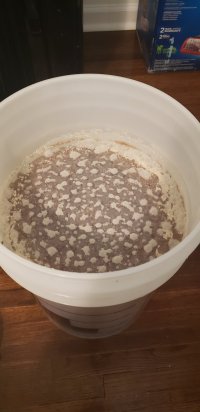BrewingManatee
New Member
- Joined
- May 20, 2022
- Messages
- 3
- Reaction score
- 1
Tried to make my own recipe for the first time: a gose using Goodbelly with lactobacillus to kettle sour it. Let it sour in the kettle for a few days and then transitioned it to the fermenter. After a couple weeks, added some lime peel and still looked good, but didn't yet have enough flavor. 1 week later, added some more lime peel. I avoided the pith of the lime when peeling, and sanitized it before adding it to the fermenter. But a few days later when I checked again a mold-looking layer had started to grow on top. It doesn't smell bad, and tasted correct when I tried it last week. But it sure doesn't look appetizing. Is it to be expected when brewing with lactobacillus, or did I get an infection, probably when adding the 2nd dose of lime? If it's expected, then why did it take multiple weeks to start forming?
First picture is from last week; next 2 are from today.
First picture is from last week; next 2 are from today.




